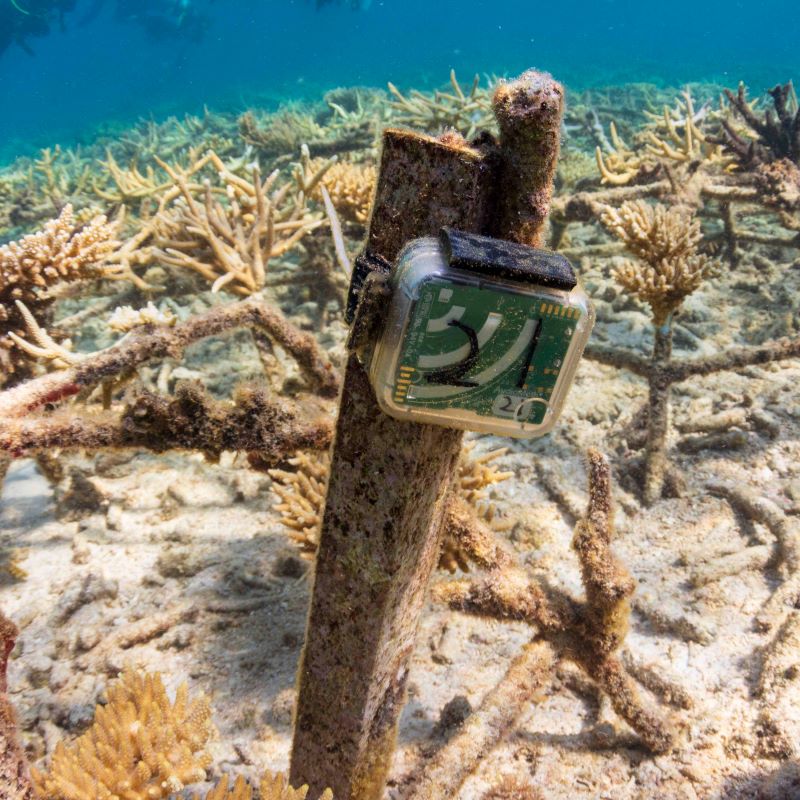A new Perspective article highlights the importance of using technology to help conserve wildlife.

In recent years, the field of conservation technology has developed as a means to help conserve wildlife. A new J. R. Soc. Interface article provides an overview of this field, its importance and discusses where it could be headed in the future. We spoke to one of the authors, Dr Andrew K. Schulz, to find out more.
Could you briefly introduce your Perspective?
We are currently experiencing massive biodiversity loss on our planet, but scientists are working on some fascinating new technologies and tools to help conserve our planet’s biodiversity. This Perspective is a starting point for researchers interested in developing conservation tools. We introduce common vocabulary in conservation technology, computer vision, frugal science, and more to help researchers of all disciplines build a strong foundation. We discuss five case studies of science happening around the world to help counter biodiversity loss and discuss some of the negative histories of this field, including the historical colonization of conservation. We hope the work will provide inspiration and vision to scientists, engineers, policymakers, and the public for the advancement of conservation tools worldwide.
How have interdisciplinary collaborations supported your science?
As a scientist, I work hard to understand my field and worldwide innovations in biomechanics, biomimicry, and conservation technology. However, there are researchers whose knowledge of the techniques, technologies, and innovations in this field is greater than mine, and it’s important to learn from them. I have been fortunate early on in my career to work with excellent teams and to have several interdisciplinary collaborators. For example, Suzanna Stathatos is an incredibly talented scientist, friend, and (fingers crossed) a life-long collaborator, and helped contribute to this article. She is a computer vision expert and wrote perspectives about machine learning for conservation, as well as a brilliant case study on how game theory impacts wildlife protection. This is just one example of an interdisciplinary collaboration, but I am always happy to work with excellent people. I encourage scientists to have collaborative conversations as this can help facilitate better science, and I’m grateful that this journal supports interdisciplinary science and collaboration.
How was your experience publishing with us?
I have now been able to publish twice with J. R. Soc. Interface, and both experiences have been excellent. The reviewers for this paper gave us actionable feedback that helped improve the case studies and overall flow of the manuscript. As researchers working in interdisciplinary fields, finding a great place to publish can be a struggle. I encourage researchers to submit their interdisciplinary work to J. R. Soc. Interface; the publishing times, proof edits, and reviewer response time have been excellent for me in the past. I highly recommend this publication.
Where do you think this field could be in ten years’ time?
The field of conservation technology was formally introduced in the literature only a few years ago. I am not sure where the field could be in ten years’ time, but I will give some hopeful insights into what conservation tool construction could be in ten years. Colonial science is still commonplace in many research practices within and outside conservation (for more about colonial science, I recommend an article by Dr Asha de Vos [1]). I hope in ten years, conservation tools are always constructed with indigenous engineers, and scientists as the leaders. I hope by that time engineers and computer scientists work closely with biologists to create tools that are accessible and able to conserve our biodiversity. The field of conservation technology and conservation tool construction is gaining traction. I also hope there are conservation technology courses and degrees undergraduate students can take to learn how they can use their knowledge to conserve wildlife on our planet.
References:
1. De Vos, A. The Problem of ‘Colonial Science’. Scientific American. 2020.
To find out more about the interdisciplinary work we publish or submit to us, take a look at Journal of the Royal Society Interface.
Image caption: Image taken by Ben Williams illustrating an AudioMoth in an ocean coral environment. This is one of the featured case studies in the Perspective by Schulz et al. For more information about AudioMoth and open acoustic devices see their website: https://www.openacousticdevices.info/audiomoth. Credit: Ben Williams.







